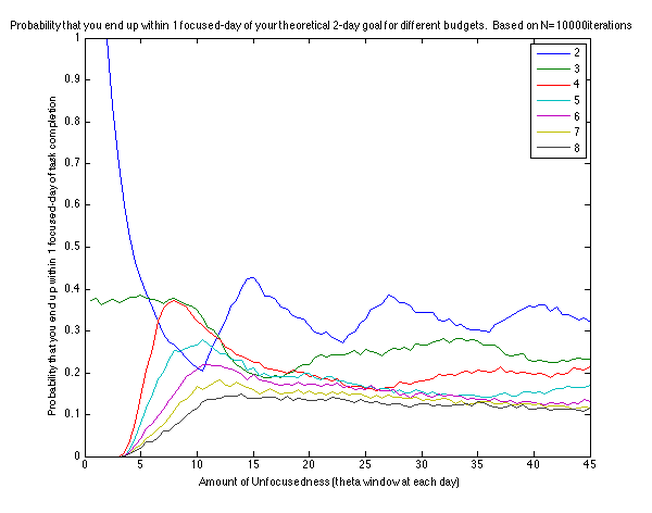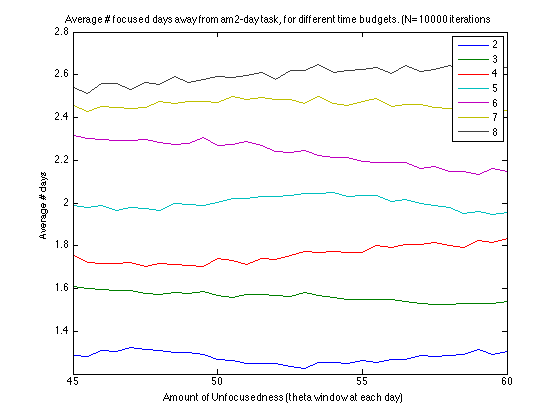|
In brief, I wrote a probabilistic model for reaching a deadline given three parameters: 1. The theoretical number of days it takes to complete a project, assuming you are headed the right direction every time you work on it. 2. The actual number of days you work on it. 3. How unfocused your work attempts are every day your work on the project. Assumptions (Version 0) 1. You must work all budgeted days, so you never stop even if you are 1 focused-day away from completing the project. 2. Your focus decreases, ("unfocusedness increases") as the duration of the project elapses until a maximum "unfocusedness". Some interesting phenomena happening due to the geometric constraints of this model - which I designed more from intuition than anything else. Cool oscillations as a function of maximum unfocusedness (x-axis). Dips in this curve show some ranges of unfocusedness (large x) that are more beneficial than more focused (small x) ranges. Because of the assumption that you must keep working all budgeted days, 4-day+ budgets approach project completion as they increase in unfocusedness reaching the closest distances between 6 and 12 degrees. Cool oscillations as a function of focusedness, and some big differences between durations spent working...TBD Continuation into very unfocused realms (high x).
Comments are closed.
|
Archives
May 2014
Categories |



 RSS Feed
RSS Feed